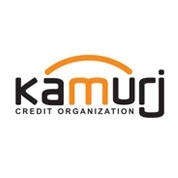Only 4% of Yerevan population make purchases from Armenian online stores.
17.12.2015 | 11:21
Home /
News /


Image by: http://eer.ru/

As of June 2015, only 4.2% of Yerevan population made purchases from Armenian online stores or platforms.
This figure is derived from the marketing research implemented by R-Insights Research and Consulting Company in the period of 20 May to June 4, 2015. The objective of the research was to measure the incidence rate of online purchases as well as to outline the main categories of purchased goods.
As the research results show, food is the category which is most frequently purchased online by Yerevan population: 2.2% have bought food online. Jewellery/accessories and souvenirs have been purchased online by 1.3% and 1%, respectively. Less than 1% of Yerevan population has bought clothes, as well as household appliances and other items (refer to Chart 1 and Chart 2).
Chart 1. Responses to the question «Could you, please tell if personally you have made online purchases from Armenian online stores/platforms during the last 1 year?” (as of June 2015) 
Chart 2.Responses to the question. «Could you please tell, what goods have you purchased from Armenian online stores/platforms during the last year?” 
According to the survey results, the majority of those who had made online purchases from Armenian online stores are female (56%), representatives of 20-30 age group (64%), respondents with higher education (84%) and employed (72%).
Table 1. Demographic profile of online purchase makers (from Armenian online stores)
It is important to note that owing to the small incidence rate of purchases from Armenian online stores, the purchasers’ breakdown by basic socio-demographic parameters is not representative and statistically significant. However, the numbers are introduced to outline the general picture.
Survey findings prove that Yerevan population practice online purchases from foreign online stores and platforms more frequently: as of June 2015 14.2% of respondents have made online purchases from foreign online stores during the previous 1 year period. Mostly procured categories from overseas online stores are jewellery/accessories (6.8%), clothes (6.2%) as well as household appliances, furniture (4.2%) (refer to Chart 3 and Chart 4).
Chart 3. Responses to the question «Could you, please tell if personally you have made online purchases from foreign online stores/platforms during the last 1 year?” (as of June 2015) 
Chart 4. Responses to the question. «Could you please tell, what goods have you purchased from foreign online stores/platforms during the last year?”

In this case also, female (55.3%), 20-30 year-old (57.6%), respondents with higher education (87.1%) and employed (64%) dominate over other subgroups among those who have made purchases from foreign online stores (refer to Table 2).
Table 2. Demographic profile of online purchase makers (from foreign online stores)
The research target group was 20-55 year-old Yerevan population who had resided in Yerevan at least 1 year at the moment of survey and their household monthly per capita income exceeded 40 000 AMD. Sample size (number of respondents) was 600, the respondents were selected in accordance with multi-stage cluster random sampling methodology. Sampling error is 4%.
Last news
20.03.2025 | 15:49 News
20.03.2025 | 14:36 News
Armeconombank: VISA Guru Travel family package with special benefits
19.03.2025 | 13:42 News
Telcell develops software solution to prevent coin theft from terminals





















Կարծիքներ
Հարգելի այցելուներ, այստեղ դուք կարող եք տեղադրել ձեր կարծիքը տվյալ նյութի վերաբերյալ` օգտագործելուվ Facebook-ի ձեր account-ը: Խնդրում ենք լինել կոռեկտ եւ հետեւել մեր պարզ կանոներին. արգելվում է տեղադրել թեմային չվերաբերող մեկնաբանություններ, գովազդային նյութեր, վիրավորանքներ եւ հայհոյանքներ: Խմբագրությունն իրավունք է վերապահում ջնջել մեկնաբանությունները` նշված կանոնները խախտելու դեպքում: